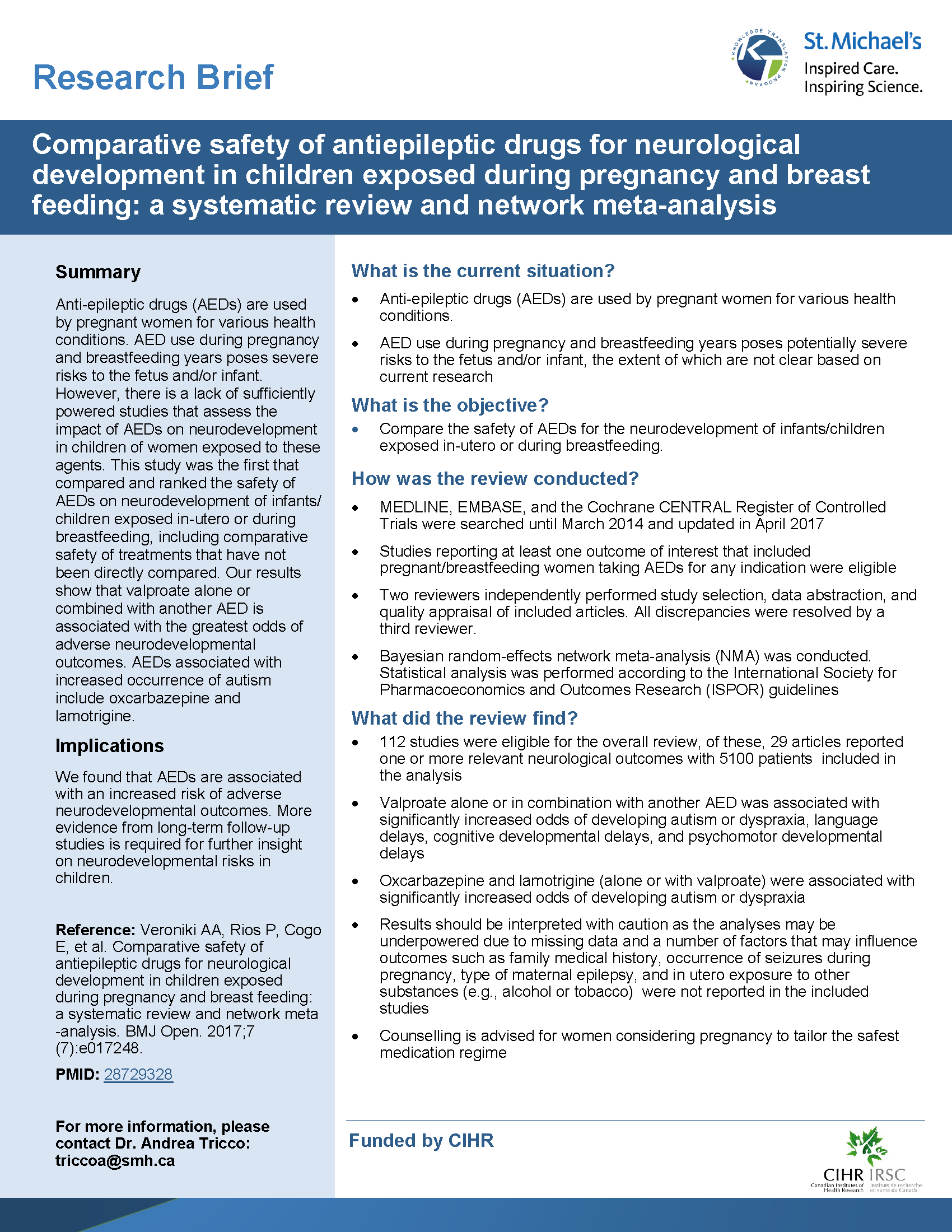Comparative safety of antiepileptic drugs for neurological development in children exposed during pregnancy and breast feeding: a systematic review and network meta-analysis
Veroniki AA, Rios P, Cogo E, Straus SE, Finkelstein Y, Kealey R, Reynen E, Soobiah C, Thavorn K, Hutton B, Hemmelgarn BR, Yazdi F, D’Souza J, MacDonald H, Tricco AC. Comparative safety of antiepileptic drugs for neurological development in children exposed during pregnancy and breast feeding: a systematic review and network meta-analysis. BMJ Open. 2017 Jul 20;7(7):e017248. doi: 10.1136/bmjopen-2017-017248.
[sidebar]
Commissioned and Funded by: Canadian Institutes of Health Research (CIHR) through the Drug Safety and Effectiveness Network (DSEN)
Share Buttons [span][/span]
[ssba-buttons] [/sidebar] [sidebar-content]- Our results can be used by patients and physicians to tailor administration of these agents
- Provided Health Canada with evidence on the safety of these agents for their decision-making
- Featured in a media article targeting epileptic patients and physicians
- In comparison to children not exposed to anti-epileptic drugs in utero, children exposed to anti-epileptic drugs are at increased risk for adverse neurodevelopmental outcomes. In particular, the agent valproate, both alone and when combined with another anti-epileptic drug, was associated with the greatest odds of adverse neurodevelopmental outcomes, when compared to control
- The use of oxcarbazepine and lamotrigine were associated with increased odds of developing autism
Altmetrics:
Related Projects:
[/sidebar-content]Category : KS Projects
Date : 12 Aug 2020



